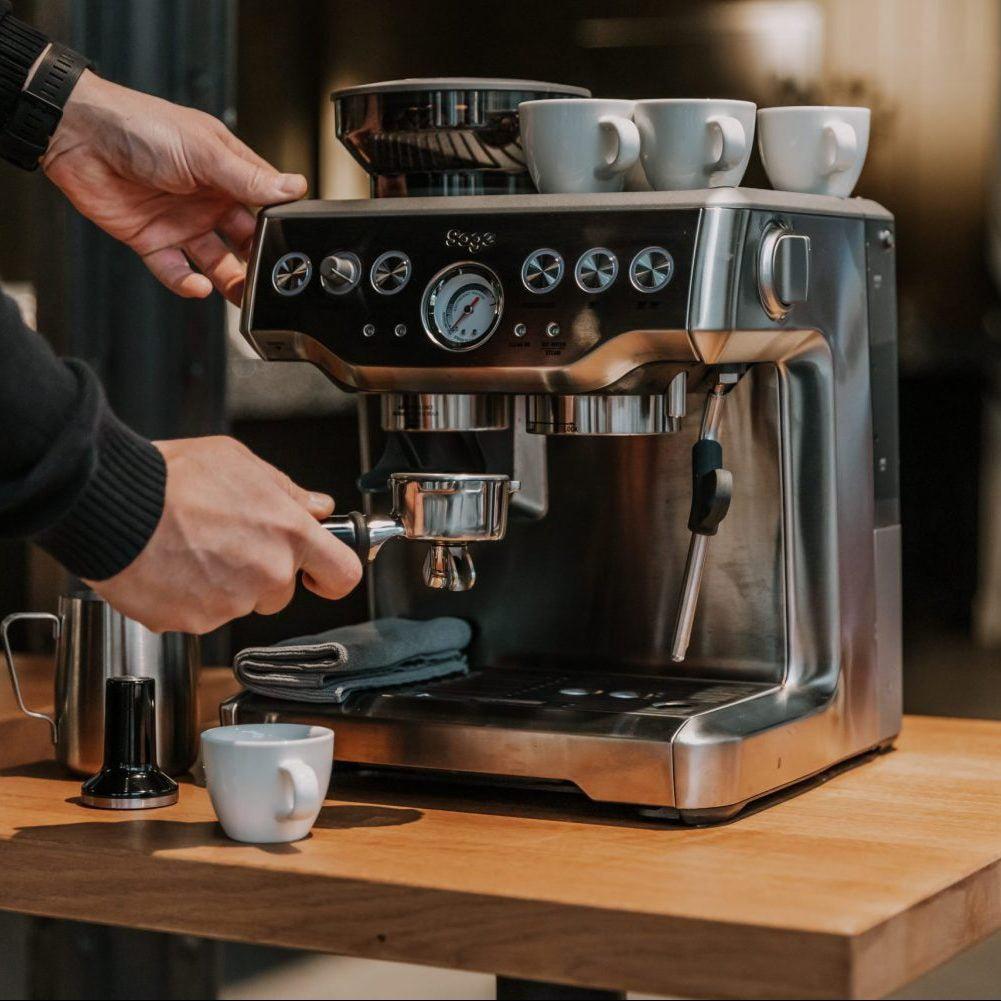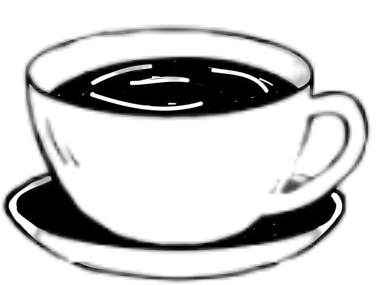If you're like me, you take your coffee seriously. The Breville/Sage Barista Express has been a game changer in my coffee routine, offering everything I need to create the perfect cup. One feature I didn’t fully appreciate until recently was the ability to adjust the brew temperature. Changing the brew temperature can have a significant impact on the taste of your coffee, and I'm here to guide you through the process.
In this article, I’ll walk you through how to change the brew temperature on your Breville/Sage Barista Express, why it matters, and how it can improve your coffee experience. Whether you’re a seasoned barista or just starting your coffee journey, this guide will help you master one of the key variables in brewing.Uncover the premium brewing capabilities in our Breville Dual Boiler BES920XL review

Understanding the Brew Temperature on Breville/Sage Barista Express
Before diving into the steps on how to change the brew temperature on Breville/Sage Barista Express, it's important to understand why it matters. The brew temperature can influence the extraction process of your coffee, affecting how the flavors are developed. If your coffee is brewed at too low a temperature, it can taste sour, under-extracted, and weak. If brewed too hot, it can become bitter, over-extracted, and unpleasant.
The Breville/Sage Barista Express allows you to adjust the brew temperature, ensuring that you can fine-tune your coffee to your taste preferences. Finding the right temperature can be a bit of trial and error, but once you understand how to adjust it, you’ll have more control over the flavor profile of your espresso shots.Explore the intuitive design and features in our Breville Barista Touch Impress review
Why Should You Change the Brew Temperature on Breville/Sage Barista Express?
Changing the brew temperature on the Breville/Sage Barista Express is crucial for creating different flavor profiles in your coffee. Here are some key reasons why you might want to make this adjustment:
- Flavor Balance: Brew temperature impacts how the coffee grounds are extracted. A lower temperature may preserve the fruity or floral notes of your coffee, while a higher temperature can bring out the more bitter, chocolatey flavors.
- Coffee Beans: Different beans require different brewing temperatures. Light roasts, which are more acidic, tend to taste better when brewed at a lower temperature (around 195°F), while dark roasts may benefit from a higher brewing temperature (around 200°F).
- Consistency: If you find that your coffee doesn’t taste the same each time you brew, changing the temperature could help you achieve more consistent results.
- Customization: Changing the brew temperature allows you to tailor the coffee to your personal preferences. If you're seeking a smoother, more refined cup of espresso, experimenting with brew temperature could be the key.
How to Change the Brew Temperature on Breville/Sage Barista Express
Now that we understand why brew temperature is important, let’s get into the nitty-gritty of how to change the brew temperature on the Breville/Sage Barista Express. Luckily, the process is relatively simple and can be done through the machine's menu system.Compare these two top models in our Breville Barista Express Impress vs Pro review
- Turn on the Machine: Start by turning on your Breville/Sage Barista Express and wait for it to heat up. Once the machine has finished its initial warm-up, you'll be ready to make adjustments.
- Enter the Menu System: To access the brew temperature settings, press and hold the ‘Program’ button on your machine. This will open up the menu system, allowing you to customize various features.
- Adjust the Brew Temperature: Use the ‘Single’ or ‘Double’ shot buttons to navigate through the available options in the menu. Keep pressing the button until you see the temperature settings appear on the display screen.
- Increase or Decrease the Temperature: Once you're on the temperature setting screen, you can adjust the brew temperature by turning the dial to the right (to increase the temperature) or to the left (to decrease the temperature). You can adjust it by increments of 1°C.
- Save Your Settings: Once you’ve selected your desired temperature, press the ‘Program’ button again to save the settings. Your Breville/Sage Barista Express will now brew your coffee at the new temperature.
- Test and Tweak: It’s important to test the results of your temperature adjustments. Brew a shot of espresso and taste it. If it’s not quite right, go back and make further adjustments until you find the temperature that works best for you.
What Temperature Should I Set for Different Coffee Beans?
The ideal brew temperature can vary depending on the type of coffee beans you're using. While personal preference is key, here are some general guidelines to help you determine the right temperature:
- Light Roasts: Lightly roasted beans typically have more acidic and fruity flavors. These beans taste best when brewed at a slightly lower temperature (around 195°F). A lower brew temperature allows the delicate flavors to shine through without overpowering them with bitterness.
- Medium Roasts: Medium roasts are balanced in flavor, and they can usually handle a broader range of temperatures. You can experiment with a brew temperature of 200°F to achieve a good balance of sweetness and richness.
- Dark Roasts: Dark roasted beans tend to have bolder, bitter flavors. Brewing them at a higher temperature (around 200°F) helps extract the more robust, chocolatey flavors. Too low a temperature can result in a weak, under-extracted shot.

How Changing the Brew Temperature Can Improve Your Coffee
Changing the brew temperature on your Breville/Sage Barista Express can significantly affect the quality of your espresso. Here's how adjusting the temperature can improve your coffee:
- Enhanced Flavor Profile: Adjusting the temperature helps extract the right balance of flavors from your coffee grounds. A lower temperature preserves the lighter, brighter notes, while a higher temperature intensifies the deeper, more robust flavors.
- Prevents Over-Extraction: If the temperature is too high, the coffee can become over-extracted, resulting in a bitter, unpleasant taste. By reducing the brew temperature, you can prevent this and ensure that only the best flavors are extracted.
- Consistency in Brewing: If you're consistently making adjustments to your temperature, you'll find it easier to replicate the same flavor profile each time you brew. This is particularly useful when you're brewing for friends or family and want to offer them a consistent experience.
- Achieving the Perfect Shot: Adjusting the brew temperature helps you dial in the perfect shot of espresso. Whether you're after a sweeter, fruitier taste or a bolder, more intense flavor, the temperature settings can help you achieve the desired result.
Troubleshooting Common Issues with Brew Temperature on Breville/Sage Barista Express
While adjusting the brew temperature is an easy process, you may encounter some common issues that are worth troubleshooting. Here are a few tips to help:
- Temperature Fluctuations: If you notice that the temperature fluctuates during brewing, check the machine’s water tank and make sure it’s filled adequately. Low water levels can cause inconsistent brewing temperatures.
- Uneven Extraction: If your coffee is tasting uneven, it might be due to inconsistent grind size or tamping pressure. Ensure that you're using the right grind size for your coffee beans and that you're tamping evenly to create uniform extraction.
- Temperature Still Too High or Low: If you're still not satisfied with the temperature, go back into the settings and make fine adjustments. Sometimes small changes can make a big difference in the flavor profile.
Conclusion: Mastering the Brew Temperature on Breville/Sage Barista Express
In conclusion, knowing how to change the brew temperature on your Breville/Sage Barista Express is a valuable tool that allows you to personalize your coffee experience. By understanding the relationship between temperature and flavor, you can make informed decisions on how to brew your perfect shot of espresso.Find the right machine for you in our Breville Barista Pro vs Express review
Experiment with different temperatures, and over time, you'll discover what works best for you and your coffee beans. With a little practice, you’ll become a master at adjusting the brew temperature, ensuring that every cup of coffee is a delightful experience. Happy brewing!Learn the differences between these high-end machines in our Breville Oracle vs Oracle Touch review
Frequently Asked Questions (FAQ)
Q: How do I change the brew temperature on the Breville/Sage Barista Express?
A: To change the brew temperature on your Breville/Sage Barista Express, press and hold the ‘Program’ button to enter the menu system. Use the ‘Single’ or ‘Double’ shot buttons to navigate to the temperature settings. Once there, adjust the temperature using the dial to increase or decrease the temperature. Save the settings by pressing the ‘Program’ button again.
Q: What is the ideal brew temperature for light roast coffee?
A: Light roast coffee generally tastes best when brewed at a lower temperature, around 195°F. This helps preserve the delicate, fruity flavors of the beans without over-extracting them.
Q: Can I adjust the brew temperature for different types of coffee beans?
A: Yes, adjusting the brew temperature is a great way to tailor your coffee to different beans. Light roasts typically require lower temperatures (around 195°F), while medium roasts can handle temperatures closer to 200°F. Dark roasts tend to taste best at higher temperatures (around 200°F) for a richer, more robust flavor.
Q: Why does brew temperature matter when making espresso?
A: Brew temperature impacts the extraction of flavors from the coffee grounds. A lower temperature can preserve bright, acidic notes, while a higher temperature extracts deeper, bolder flavors. The right temperature helps you achieve the perfect balance and flavor profile.
Q: Can I experiment with different temperatures to find my preferred taste?
A: Absolutely! Adjusting the brew temperature allows you to experiment and find the ideal setting for your personal taste. Try different temperatures and taste the difference to see what works best for you.
Q: What happens if the brew temperature is too high or too low?
A: If the temperature is too low, your coffee may taste sour or under-extracted. If it’s too high, the coffee may become bitter and over-extracted. It’s important to find the right temperature to ensure a balanced, flavorful shot.
Q: How can I ensure consistent brew temperature on my Barista Express?
A: To maintain consistent temperature, ensure that your machine is properly calibrated and that the water tank is full. Also, check that the coffee beans are freshly ground, and the machine has fully heated up before brewing. These factors help maintain temperature stability during brewing.
Q: Can I adjust the brew temperature while the machine is brewing?
A: No, the brew temperature must be adjusted before you start brewing. Once the machine is brewing, the temperature is already set for that shot. To adjust the temperature, you must enter the menu system before brewing.
